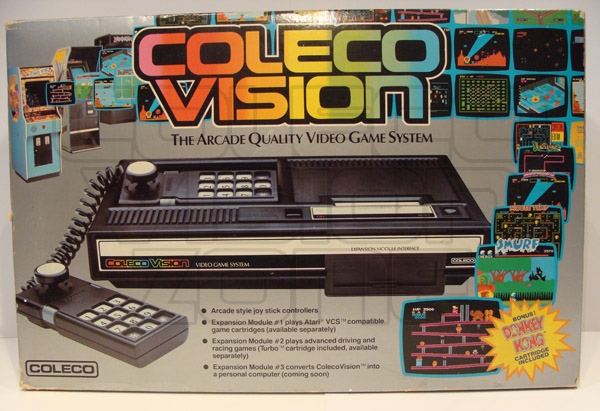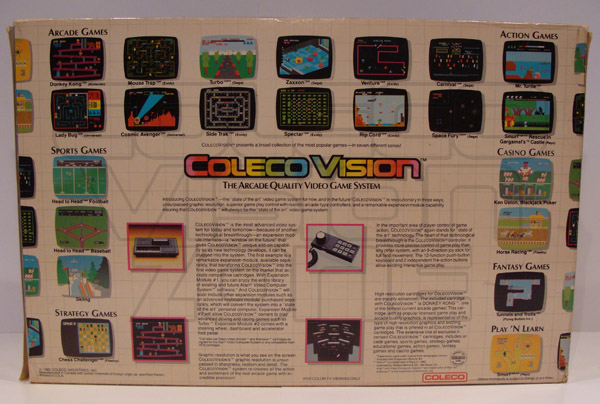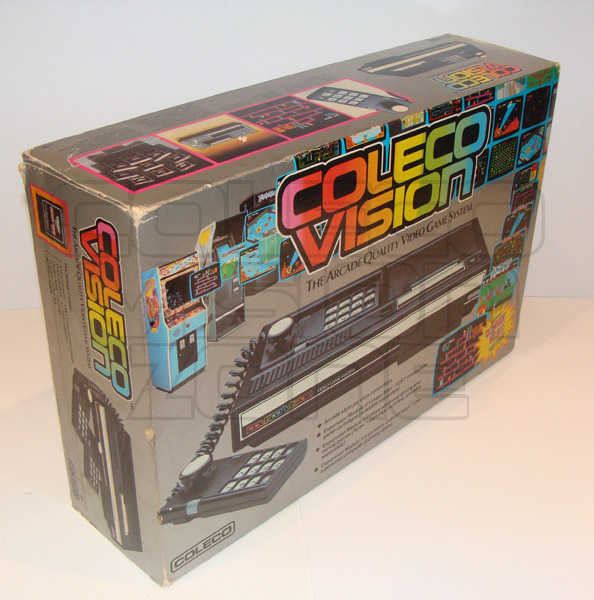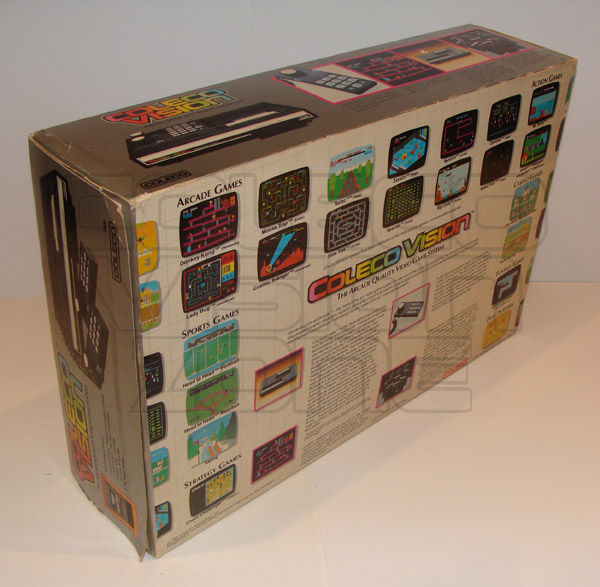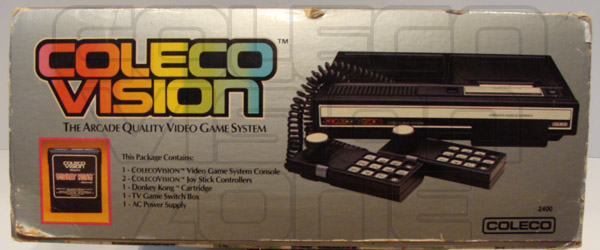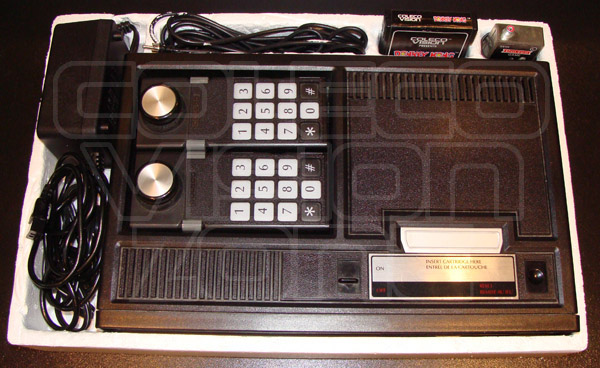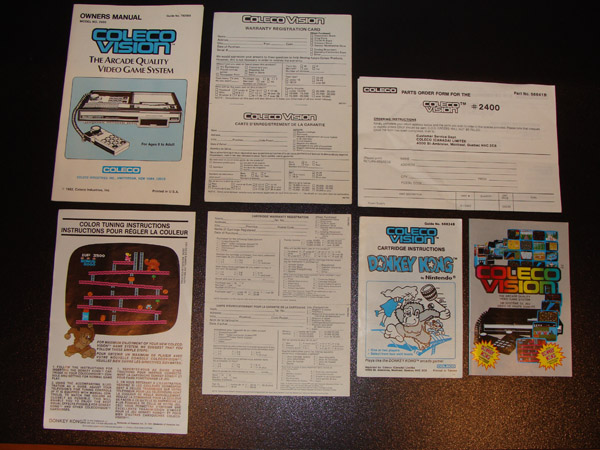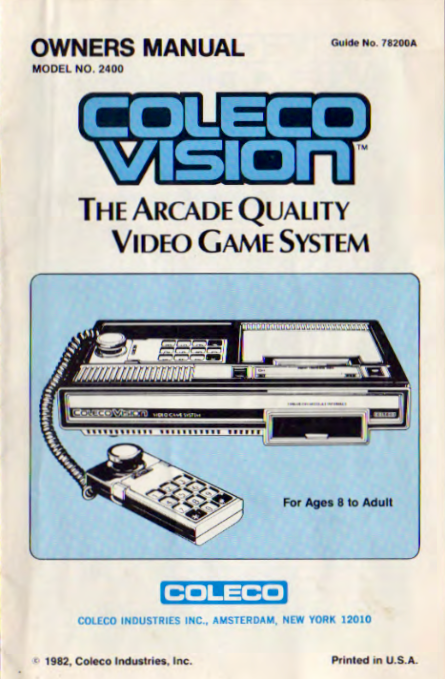ColecoVision
On June 1, 1982, Coleco re-entered the fray with the announcement of its "third generation" video game system, ColecoVision. Touting "arcade quality", ColecoVision took aim at the seemingly unassailable Atari 2600. In August, Coleco introduces the ColecoVision for sale with twelve games, and a catalog showing ten more on the way (many of which were never released),. They sold over 550,000 systems by Christmas-time and the first one million ColecoVisions sold in record time. In 1983 it topped sales charts, beating out Atari and Mattel, with much of its success being contributed to its pack-in, Donkey Kong. The ColecoVision soon had more cartridges than any system except the Atari 2600, and with the 2600 converter still today has more playable games than any other system.
Coleco was the first home videogame maker to devote the majority of their product line to arcade conversions, using the superior graphics of the ColecoVision to produce nearly arcade-quality games, albeit often missing a screen or level. Unfortunately, the ColecoVision suffered the same fate as the rest in the great video game shake-out of 1984. Coleco's unsuccessful bug-ridden ADAM computer only complicated the problem. Coleco stopped production of the ColecoVision in 1984. Their last few titles were barely seen in stores. Soon after that, Telegames bought much of Coleco's stock and even produced a few titles of their own that didn't reach the shelves before the shake-out.
When Coleco left the industry they had sold more than 6 million ColecoVisions in just two years, even with the last year being troubled by the shake-out. Many in the industry believe if it wasn't for the videogame crash of '84, that Coleco could have gone through the 80's as the system of choice, especially with its proposed Super Game Module. It was clearly beating Atari and Mattel, but just didn't have the installed base to last out the crash. The design of the controllers is similar to that of Mattel's Intellivision — the controller is rectangular and consists of a numeric keypad and a set of side buttons. In place of the circular control disc below the keypad, the Coleco controller has a short, 1.5-inch joystick. The keypad is designed to accept a thin plastic overlay that maps the keys for a particular game. Each ColecoVision console shipped with two controllers.
All first-party cartridges and most third-party software titles feature a twelve second pause before presenting the game select screen. This delay results from an intentional loop in the console's BIOS to enable on-screen display of the ColecoVision brand. Companies like Parker Brothers, Activision and Micro Fun bypassed this loop, which necessitated embedding portions of the BIOS outside the delay loop, further reducing storage available to actual game programming.
